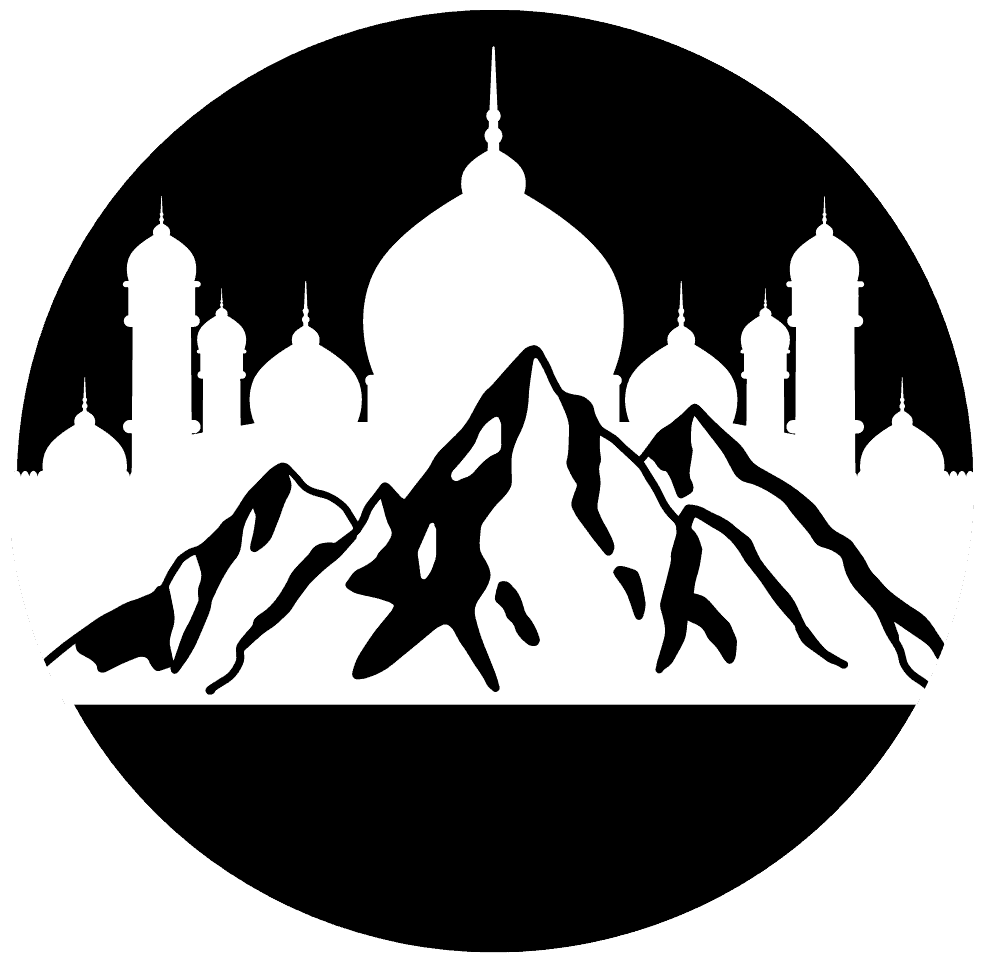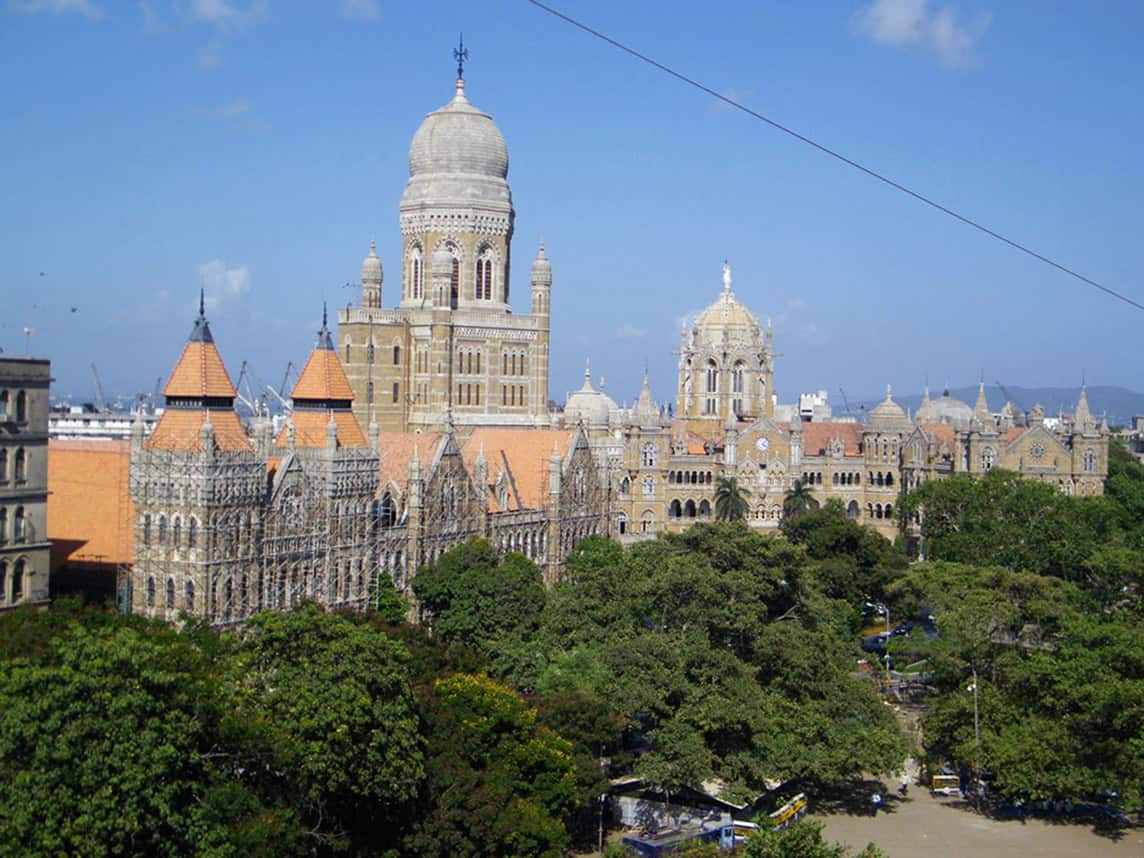Is Mumbai Worth Visiting? 13 Reasons to Visit In 2025
Are you planning a trip to India and wondering if Mumbai is worth visiting? My answer is a resounding yes! As someone who’s called Mumbai home for years, I can confidently say it’s a destination worth visiting for international travelers.
My journey took me to Mumbai as a 16 year old from a Indian small town looking to build a life in this ‘city of dreams’. It taught me to ride its highs and lows with a smile and build a steely resilience. A second home for me, I left Mumbai after 6 years of college but returned a decade later, to rediscover both the beauty and brutality of this spectacular city by the sea.
Mumbai is a land of juxtapositions – of obscene riches and radical poverty, of dreams of Bollywood and nightmares of survival, of love and hate the citizens of this metropolis find in its peace and chaos, of the sea crashing into the maze of Mumbai itself. If Delhi is a window into the soul of ancient India, Mumbai is the thumping heart of modern India – it’s largest, most diverse city, with over 21 million people within city limits and an equal number in its outskirts. The city serves as India’s financial and entertainment capital – a melting pot that is both the New York and LA of India.
If it’s your first time visiting India, then consider what type of trip you’re seeking and where else you are visiting in the country. India is a vast country with plenty of travel destinations within it from the beaches of Goa to the mountain towns of Himachal Pradesh. The best India Itinerary is one where you have carefully considered what you most want to do and see in this incredible country.
QUICK ANSWER:
Yes, you should visit Mumbai if you have a flight in or out of the country via Mumbai, then you should spend at least a day or two exploring the highlights. If you are a fan of cricket, Bollywood, or want to get a taste of Indian city life, in my opinion, Mumbai is the best city in India. It’s a microcosm of Indian culture so if you want to see the most diverse city in India then definitely add Mumbai to your India itinerary.
How Many Days Are Enough For Mumbai?
Mumbai is the largest city in India and you can spend weeks exploring the many things this megacity has to offer. If you’re looking to check out the top spots and attractions in Mumbai, you can account for 2-3 days in the city.
You can check out our various guides for Mumbai that will help you with the best things to do, where to stay, where to eat, where to catch the sunset, where to hike or walk, where to try its legendary street food, iconic Parsi cafes or its most upscale restaurants.
Read on for why you should visit this iconic city that is a window into the soul of modern India!
Best Time To Visit Mumbai
Mumbai has a typical subtropical climate, with hot and humid summers, a monstrous monsoon season and extremely mild winters. Mumbai stays hot for most of the year barring the June – September monsoon season and the short winter between December and February. Coming out of the winter and monsoon, March and October are usually the harshest months to deal with for residents, heat wise.
It would be best to visit Mumbai during the winter months of November through February, avoiding some of the chaos monsoonal deluges bring and the heat of the spring and summer months.
13 Reasons To Visit Mumbai
Here are some things to see and do that are uniquely Mumbai.
1. Feel the unique spirit of Mumbai!
There is nothing quite like the resilience, buzz and vibe of Mumbai as a city. It is a sleepless microcosm of the vast Indian subcontinent itself, encapsulating its ancient history, modernity, rapid current transformation and diversity of people. A city with close to 40 million people in the greater metro region, it is a proxy to understand the experience of human existence in the modern world itself – leaping ahead yet feeling pretty much the same.
Mumbai’s real estate is consistently amongst the top 10 in the world. It has the world’s most expensive home, built at $2B, with 600 staff for just 6 residents. It has over 200 sky scrapers coming up in the next decade, while also comprising 60% slum. Dharavi, a slum settlement in Mumbai has over a million residents in less than a square mile!
As Mumbai evolves and rapidly modernizes, the juxtapositions of its glitzy skyline, swanky coastal bridges with the poverty that is still a reality for so many in the subcontinent are a sombre and unique picture of our urban existence.
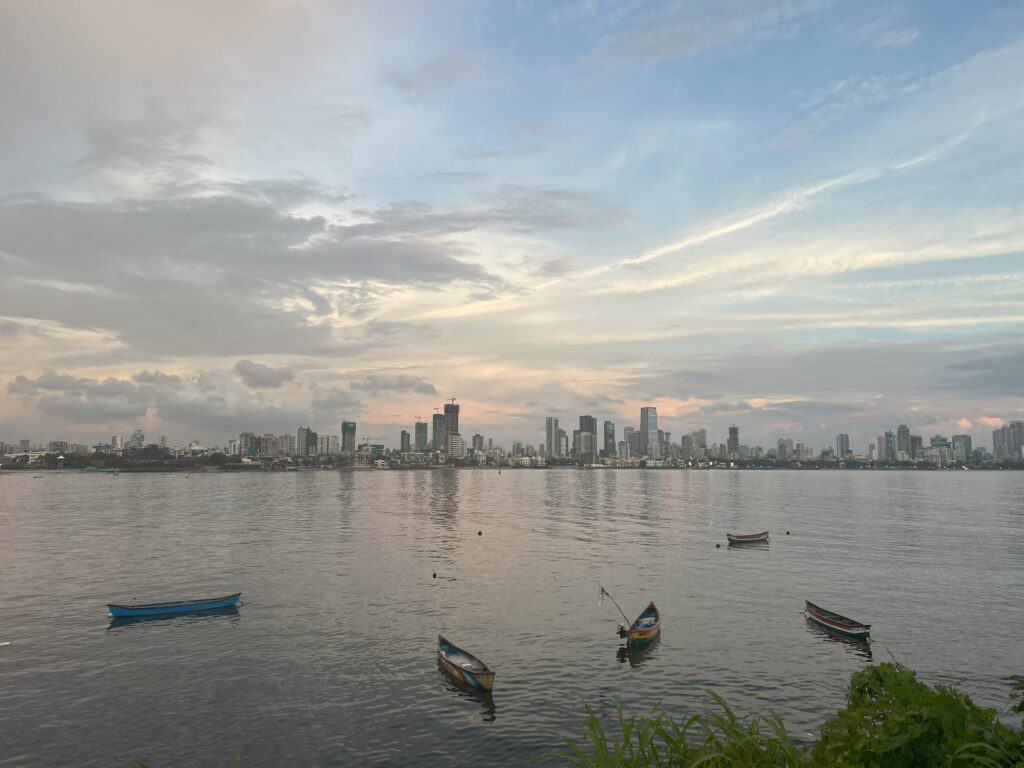
2. Check out the home of Bollywood
India makes the most movies in the world – about 2000 feature films every year in over 20 languages! While the Indian film industry is split across Mumbai, Hyderabad, Chennai and other state capitals, Mumbai is home to Bollywood or the Hindi Film industry, generally considered the largest movie industry in India by revenue and volume, producing about 1,000 movies a year.
Mumbai has iconic studios (Mehboob Studios, Filmcity Goregaon), film locations, celebrity homes and of course, the paparazzi following the many celebrities in those homes! You can check out the many filmcity tours in Mumbai if you are interested in getting steeped in Bollywood! You can also head to the National Museum of Indian Cinema.
You should also definitely watch a movie in a single screen matinee theatre like Regal, New Excelsior or Maratha Mandir to be transported into a different era of movie watching!
3. Watch a cricket match
They say India has two religions – movies and Cricket! Mumbai has always been the hotbed of Cricket in India, producing the highest number of cricketers that have played for India. It also hosted India’s first ever international match, in 1933 under the British India flag.
You can watch every type of cricket in Mumbai – matches in tiny streets called gully cricket, the up and coming cricketers at the maidans (Azad Maidan, Cross Maidan, Shivaji Park etc), international and domestic matches at the most iconic cricket venues in the world (the Wankhede Stadium, Cricket Club of India).
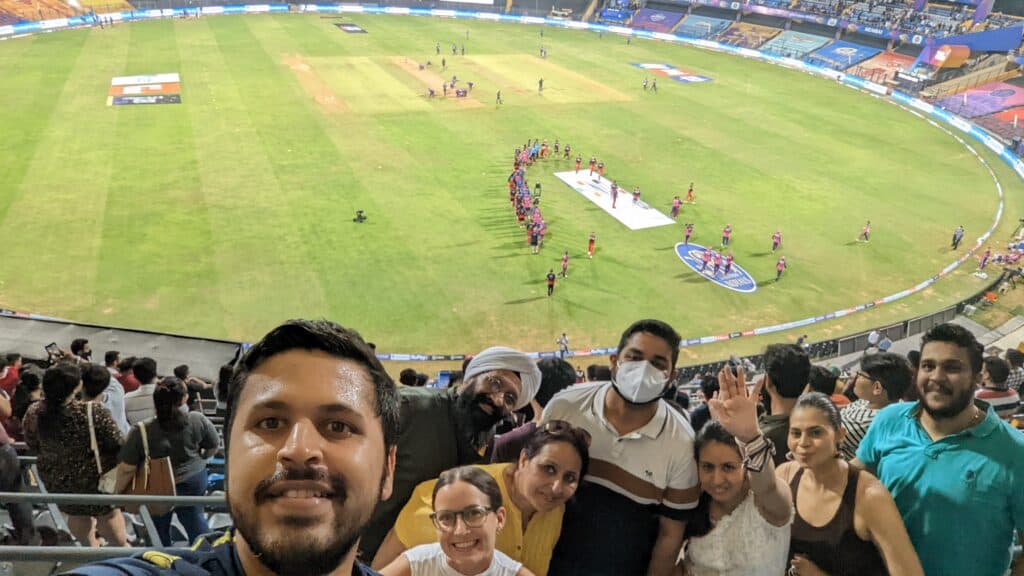
4. Visit UNESCO World Heritage Sites
Mumbai is home to 2 UNESCO World Heritage Sites, Kanheri Caves and Elephanta Island. These monuments offer a unique insight into the distant past of this island city in addition to its brushes with colonization.
Kanheri Caves are 2,000 year old cave complex with 109 caves in the Sanjay Gandhi National Park in Mumbai, the largest park within urban limits anywhere in the world.
Elephanta Island is an island east of Mumbai, about an hour away by ferry or 40 minutes by speed boat. It has another 5th Century AD cave complex which was pillaged by Portuguese invaders in the 16th Century.
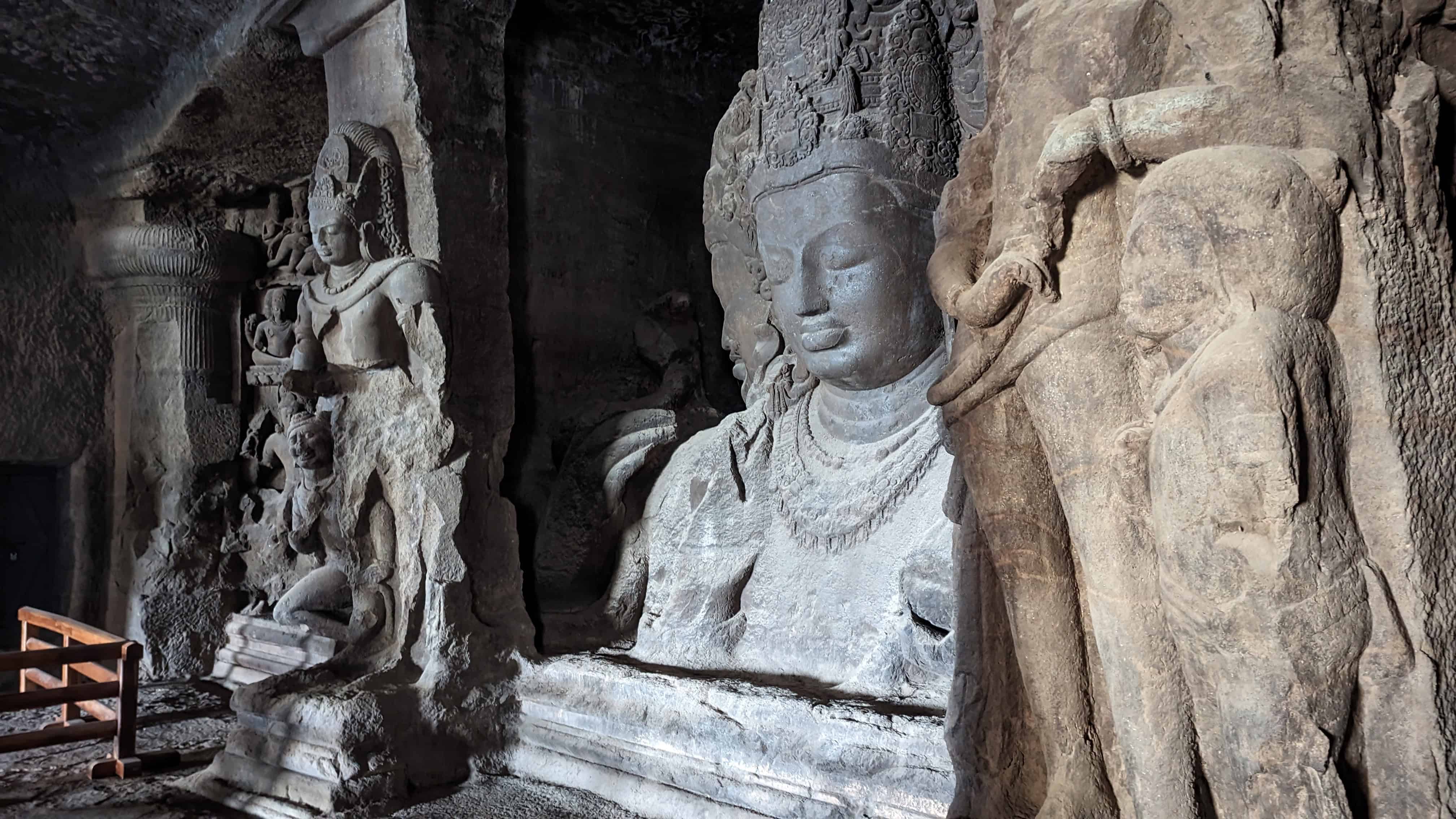
5. Eat its legendary street food
Mumbai is a city that runs on the go. Everyone literally has a train to catch. So, it obviously has amazing on the go, street food to kept its population energized. A lot of street food you’ll try in Mumbai is unique to the city – ‘designed for Mumbai’!
Some must try foods are vada pav (Bombay burger), dhabeli, chaat, pav bhaji, tava pulao, Mumbai street sandwiches and frankie. You can also check out our guide to street food in Mumbai.
If you’re not up to the task of navigating the variety of Mumbai’s street food, you can also sign up for the various street food tours available for tourists in the city.
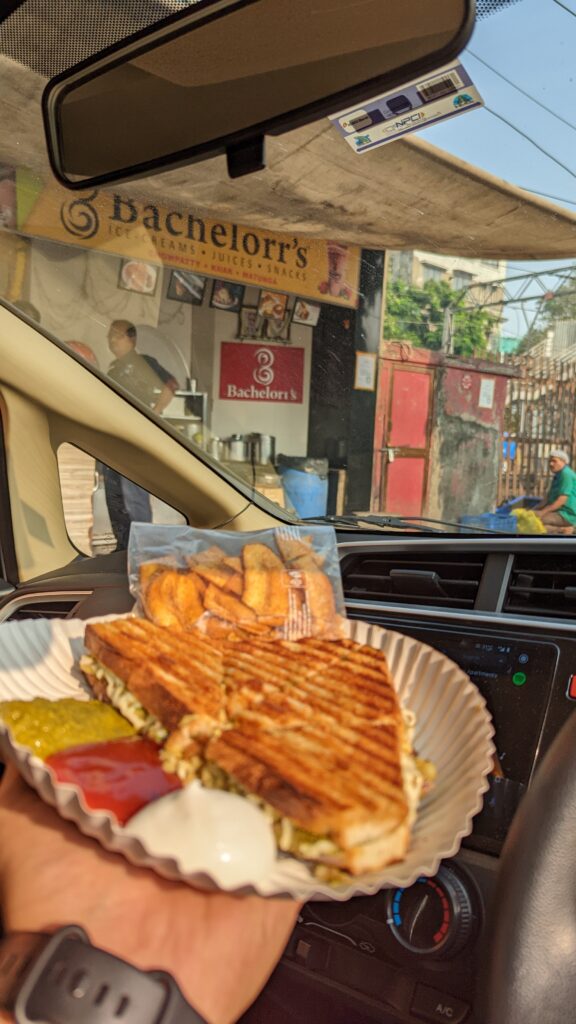
6. Live the melting pot of Indian culture
India today is a unique blend of the traditional and the modern, a bustling mix of over 10% of humanity with unimaginable levels of linguistic, food, religious and biodiversity. Mumbai has people from every strata of Indian society, from everywhere across India blending together. Mumbai as a city echoes their collective story.
This shows up through the many regions of Bombay from the colonial diversity of Ballard Estate to the new business districts of Bandra Kurla Complex. It shows up through the diversity of its food from upscale restaurants to dirt cheap street food. It shows up in the way it delivers lunches, from the app based delivery riders on motorcycles to the dabbawalas that deliver over a million lunches daily across Mumbai using trains and bicycles.
7. Experience one of the densest cities on Earth
While being in its population density is not always fun, a sea of humanity migrating north to south and back in Mumbai every single day is a spectacle as a traveler. Despite the infrastructural improvements through the Mumbai Metro and Coastal Roads, its suburban railway system, roads and residential areas are packed to capacity.
Head to Churchgate or the Mumbai CST station during the evening rush hour to see how Mumbai transports over 10 million people daily via local rail or dare to spend an Friday evening in traffic to know what I mean! Or take an organized tour of Dharavi to see how a million people live in less than a square mile!
Despite the fast-paced life, you’ll find people always ready to assist or strike up a friendly conversation. Mumbaikars (Mumbai residents) are known for their warmth and helpfulness.
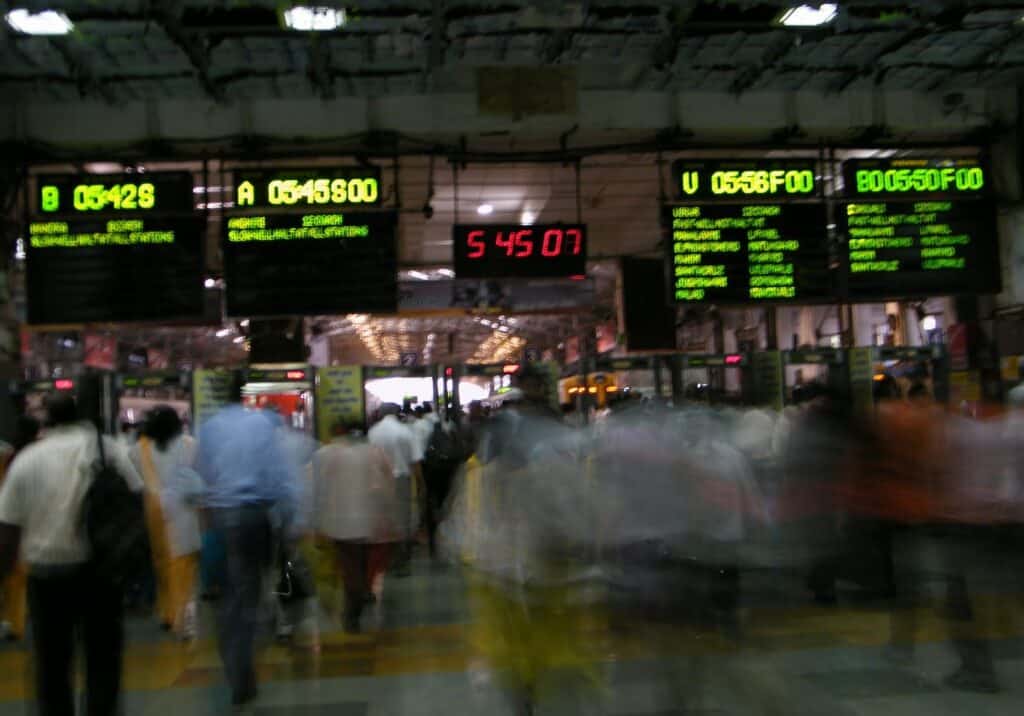
8. Eat at a Parsi cafe and experience Parsi culture
Parsi or Irani cafes are run by the Zoroastrians of Mumbai, preserving the rich Parsi culture and heritage through food. There are only 200,000 Zoroastrians in the world with 100,000 in Mumbai and the rest spread out all over the world. So, the Paris culture and cafes in Mumbai are a cultural gem unique to Mumbai. You can also walk by the various ‘Baugs’ or Parsi colonies to take a peek into the story of how Parsis migrated from Iran and resettled in Mumbai, finding security and isolation in the Baugs. Head to Dadar Parsi Colony, Cusrow Baug
A meal at the many Paris cafes is guaranteed to be one of the best meals of your trip and we have you covered with our list of top Parsi cafes in Mumbai.

9. Witness a city and country transforming
India as an economy and country is growing and will be the 3rd largest economy behind China and the US within the next decade. The disparities that exist within this country means that you see the most technologically advanced solutions exist along archaic ones. You can see this transformation through the lens of Mumbai, with its swanky bridges in the sea, new metro train lines and buildings in the sky existing alongside old, dilapidated roads and buildings.
India as a country and Mumbai as a city are upgrading, moving into the 21st Century. Simply watching a sunset at one of its many promenades like Bandra Reclamation, Worli Sea Face, Marine Drive etc. can give you a visual glimpse into this juxtaposition that is rapidly transforming.
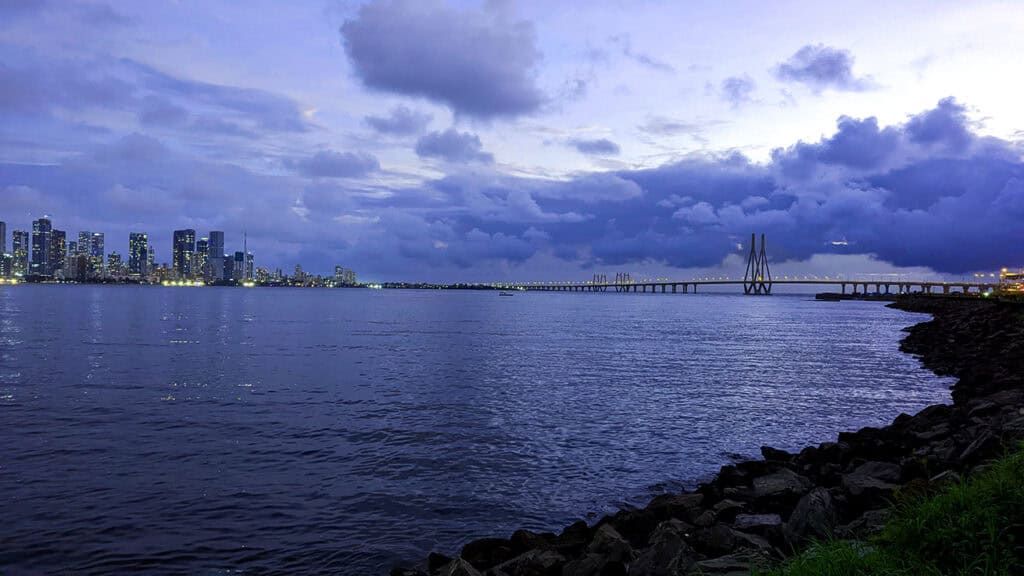
10. Visit the largest park within city limits anywhere in the world!
Despite the urban sprawl of Mumbai, you probably didn’t know that the largest park within a metropolis anywhere in the world is in Mumbai. Flanking Northern Mumbai in all directions is the Sanjay Gandhi National park, spread over 87 sq. miles (104 sq. km), with ancient caves, gushing streams, deer, leopards, lions, tigers and a peaceful look at the city from afar. It is an oasis of green in this concrete jungle and a visit to the Kanheri caves is not going to let you down. You can also sign up for tiger and lion safaris that run daily. Signing up for a tour would be prudent.
There are also many guided hikes in Sanjay Gandhi National Park and the neighboring Sahyadri Hills or the Western Ghats. You can check out our guide on hikes in Mumbai to learn more.
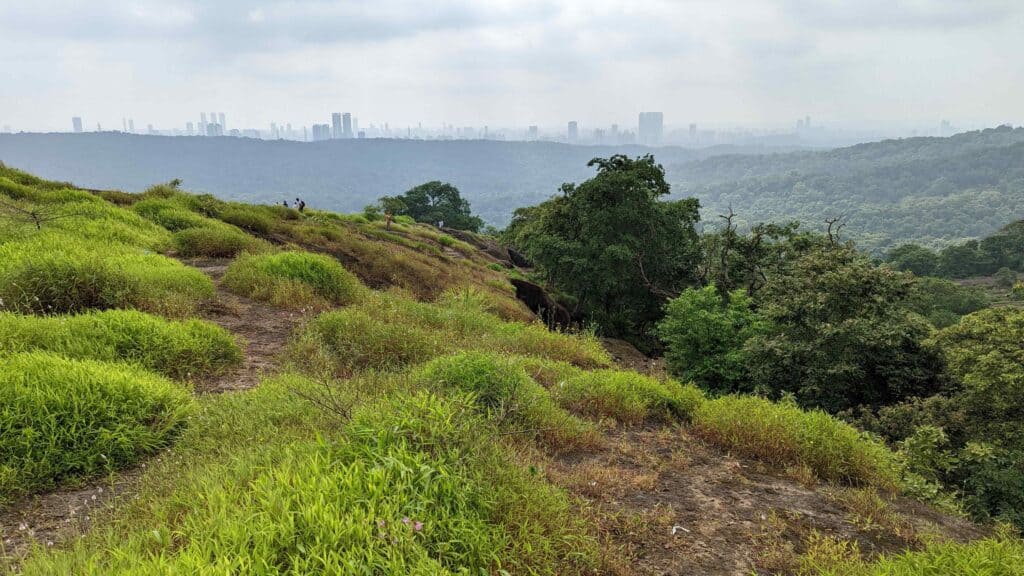
11. Witness the spectacular monsoons of Mumbai
The monsoon season in Mumbai begins in June and runs until September. Sandwiched between the Arabia Sea and the windward side of the Western Ghats or the Sahyadri range, Mumbai serves as the perfect spot for multiple deluges through this time.
Residents look forward to the rains cooling off the city after the unrelenting summer heat, with the first rains always an event that makes the newspapers. You will see people celebrating the first rains – dancing, splashing in the puddles, even making specific foods like tea and pakoras.
While traffic and transport can sometimes get messy with the city flooding a couple of times through this season, it is still a gorgeous time in the city, especially during the nights.
To witness the true beauty of the Mumbai monsoon, head to its many seaside promenades, take a drive through its sea bridges or take a hike in the national park and look at the drenched megacity from afar.
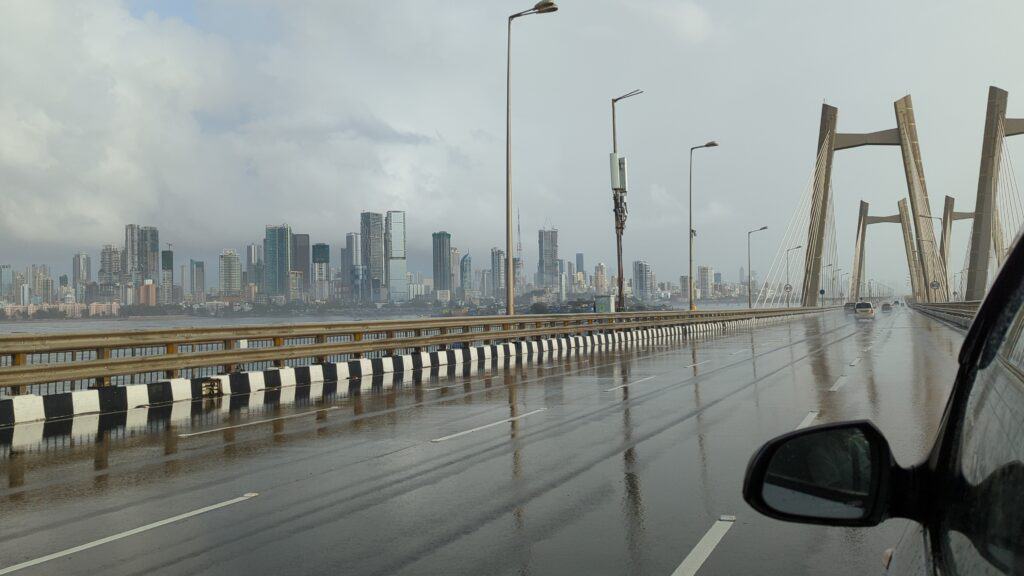
12. Go for a sail in the Arabian Sea
Mumbai being a city of 7 islands with 80% of its land being reclaimed is surrounded by the sea on 3 sides. So, there are great opportunities to set sail into the sea and enjoy the city from the gently rocking waves of the Arabian Sea!
For the best sailing tours in Mumbai check out my guide to sailing in Mumbai. Mumbai Sky Line Private Sailing Excursion is a tour I recommend!
If you don’t like boat rides, Mumbai’s seafront location offers a unique urban beach experience. Take a sunset stroll along Marine Drive, nicknamed the “Queen’s Necklace” for its glittering crescent shaped nighttime view, or visit Juhu Beach for some of the best street food in the city.
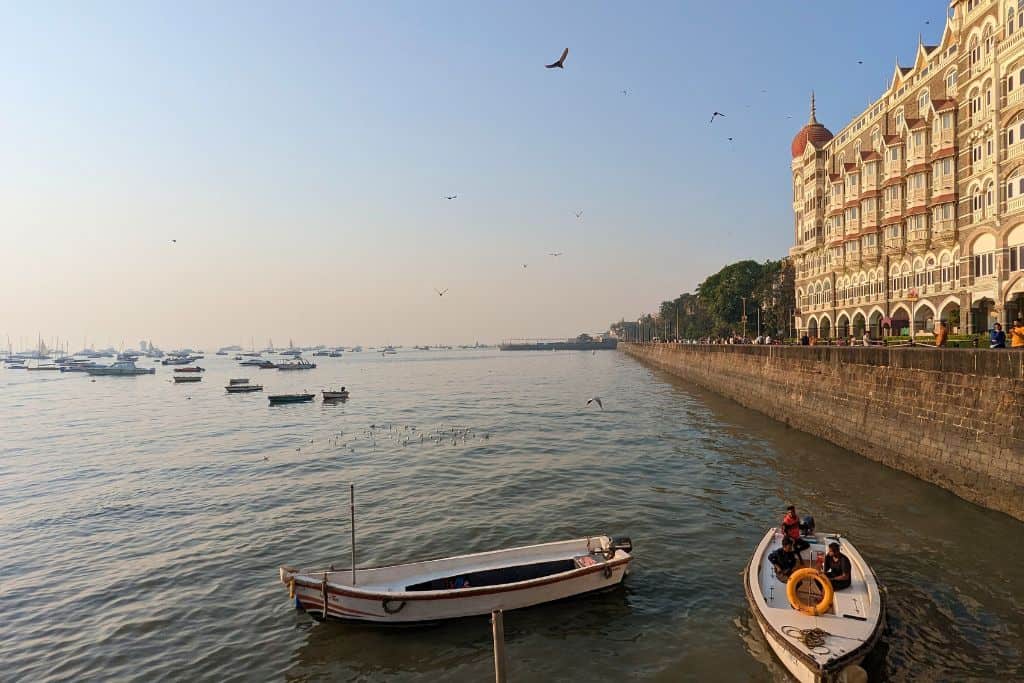
13. Experience the vibrant colors of the city!
What strikes Westerners about India generally are its vibrant colors, no matter where you look. From its street signs to its store signs, its yellow and black autos and taxis, its many cars, the flowing outfits of people, its deep orange sunsets, its colorful food and murals, Mumbai is an explosion of color. Walk around the streets of Bandra or Ballard Estate to experience this.
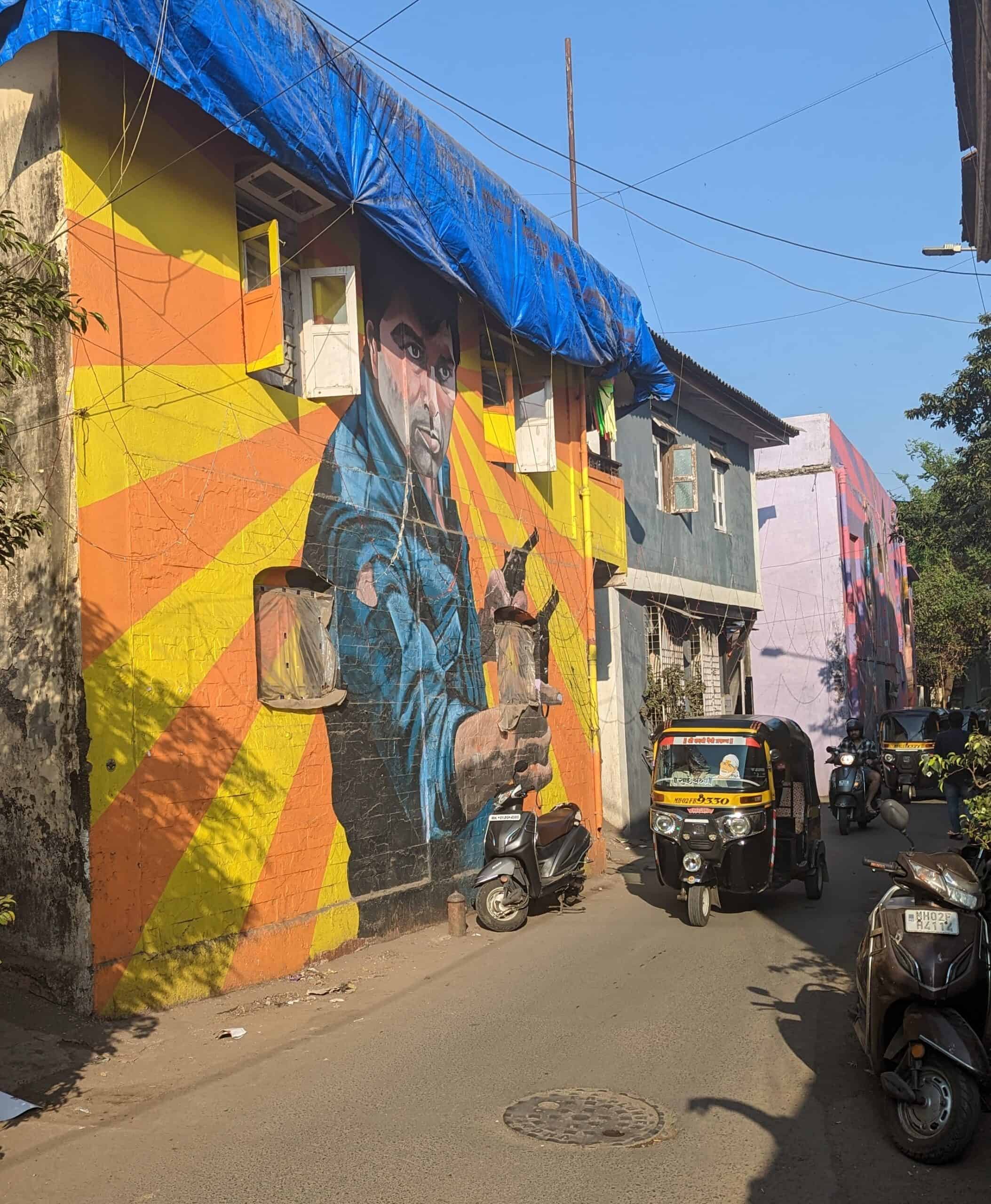
Where To Stay In Mumbai
As a tourist the top neighborhoods I recommend staying in are Colaba in South Mumbai or Bandra West. Consider your itinerary when choosing. If most of your activities are in South Mumbai, staying in Colaba will save you time and transportation costs.
Choose Colaba if:
- You’re a first-time visitor to Mumbai
- You want to be close to major tourist attractions
- You enjoy a bustling, urban environment
- You’re interested in colonial history and architecture
Choose Bandra West if:
- You prefer a more local, less touristy experience
- You’re interested in modern Indian culture and lifestyle
- You enjoy trendy restaurants, cafes, and nightlife
- You want a mix of urban amenities and relaxed coastal vibes
Where to Stay In South Mumbai (near Colaba)
Luxury options:
📍The Taj Mahal Palace is an iconic 5-star hotel offering unparalleled luxury and views of the Arabian Sea.
📍 The Oberoi Mumbai is known for impeccable service and modern amenities, complete with Indian hospitality.
Mid-range options:
📍 Abode Bombay is a boutique hotel blending vintage charm with modern comforts.
📍 Gordon House Hotel offers fairly comfortable rooms in a prime location at a reasonable price.
Where to Stay In Bandra West
📍 Taj Lands End: A 5-star property offering panoramic views of the Arabian Sea and top-notch amenities. I highly recommend staying here! You get the excellent experience of Taj’s impeccable hospitality, very comfortable rooms, and usually for more than $100 less than staying at The Taj Palace in South Mumbai.
Visiting Mumbai FAQs
What makes Mumbai special?
Mumbai is a mix of the old and new, a window into the soul of modern India. It is a unique city that every traveler should visit once in their lives. Check out all the unique things there are to see and do for free in Mumbai.
Perhaps the most compelling reason to visit is to experience the indomitable spirit of Mumbai. The city’s resilience, energy, and ability to bounce back from adversity is truly inspiring.
Is Mumbai or Delhi better to visit?
As an international traveler, it is natural that you are considering to land in Mumbai or Delhi. Each city and area has its own attractions and the debate between which city is better, Mumbai or Delhi, is something that is a favorite amongst Indians. The jury is out but to let you in on a secret, I prefer Mumbai! 😉
What language is spoken in Mumbai?
Since there are people from all over the country in Mumbai, there are hundreds of languages spoken in the city. However , the most common languages are Hindi, Marathi and English.
TL;DR: Is Mumbai Worth Visiting?
If you’re interested in India as a country, there is no better city to understand it than present day Mumbai. Its unique cultural mix, place in India’s modern economy and its seafront geography make it an enchanting travel destination.
Mumbai may be chaotic and overwhelming at first, but give it time, and you’ll discover a city that’s endlessly fascinating. Mumbai offers an experience like no other. Come with an open mind, and let the city’s energy sweep you off your feet!
